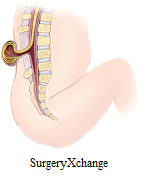Avascular Necrosis also called osteonecrosis, aseptic necrosis, or ischemic bone necrosis, is a condition that occurs when there is loss of blood to the bone. Since bone is the living tissue that requires blood, an interruption to the blood supply causes the bone to die. This condition is most common in people between the ages of 30 and 50.
Possible causes of avascular necrosis include:
1. Dislocation or fracture of thighbone: This can alter the bloodstream to the bone, which can lead to shock-allied avascular necrosis. It may develop in 20% or more of people who dislocate a hip.
2. Long use of steroid: Use of these drugs, either orally or intravenously, is associated with 35% of all cases of non-traumatic AVN. These materials gather in the blood vessels, making them narrower, and reduces the amount of blood to the bone.
3. Extreme alcohol use: Much like corticosteroids, excessive alcohol may cause fatty substances to build in the blood vessels and decrease the blood supply to the bones.
4. Blood clots, tenderness, and destruction to the arteries.
Symptoms of Avascular Necrosis
In the early stages, it shows no symptoms; however, as the disease evolves it becomes painful. At first, you may get pain when you put pressure on the infected bone. Then, pain may become get constant. If the infection advances and the bone and nearby joint breakdown, you can experience severe pain that restricts the ability to use your joint.
Treatment for Avascular Necrosis
The aims of treatment for avascular necrosis is to improve the function of the infected joint, discontinue the development of bone damage, and decrease pain.
The best treatment will depend on factors, including:
- Age
- Stage of the disease
- Location and amount of bone damage
- Cause of AVN
If the cause of your avascular necrosis is found out, treatment will comprise of the efforts to manage the underlying condition. For example, if it is caused by blood clots, the doctor will recommend medicines to dissolve gobs. If swelling of the arteries is responsible, the doctor may recommend anti-inflammatory drugs.
While these nonsurgical treatments may slow the development of it, most people with the condition finally need surgery.
Medical possibilities comprises of :
- Bone grafts, involves the removal of healthy bone from one part of the body and use it to replace the damaged bone
- Osteotomy, a procedure that includes cutting the bone and changing the alignment to relieve stress on the bone or joint.
- Total joint replacement, removing the damaged joint and replacing it with a synthetic joint.
- Core decompression, a process that includes eliminating parts of the inside of the bone to release the pressure and allow new blood vessels to form.
- Vascularized bone graft, is a technique that uses the patient's tissue to reconstruct unhealthy or broken hip joints.
Risk factors for developing avascular necrosis include:
· Strain: Injuries, such as hip dislocation or fracture, can damage nearby blood vessels and reduce blood flow to bones.
· Steroid: Use of high-dose corticosteroids, such as prednisone, is a common cause of avascular necrosis.
· Excessive use of alcohol: Regular drinking for several years may create fatty deposits to form in your blood vessels.
· Bisphosphonate use: Long period use of pills for the growth of bone density can helps to developing osteonecrosis of the jaw.
· Some medical cures: Radiation therapy for cancer can weaken bone.
Prevention
Factors helping you prevent avascular necrosis:
· Avoid alcohol.
· Keep your cholesterol levels low.
· Avoid use of high-dose steroids.
· Do not smoke.
